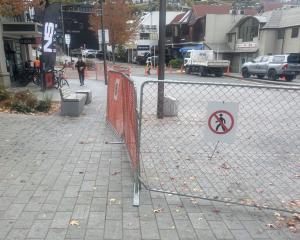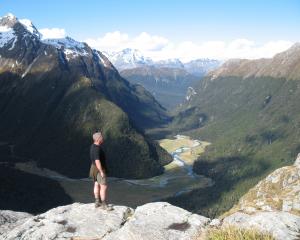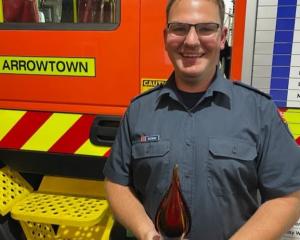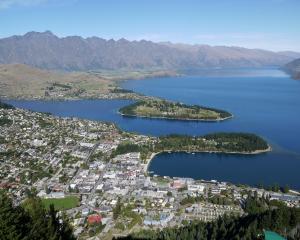Plans for night flights into Queenstown took a major step forward yesterday, a move hailed as a coming of age for the airport.
• Airport safety concerns residents
NZSki chairman Sir John Davies welcomed yesterday's announcement that New Zealand and Australian civil aviation authorities have approved in principle the safety case for flights in hours of darkness.
''It's the coming of age for Queenstown Airport,'' Sir John, a former chairman of Queenstown Airport Corporation, said.
''It will make an enormous difference being able to get in here at 7pm or 8pm in winter and get out at the same time. It will just be like the summer.''
Destination Queenstown and Tourism Industry Association bosses welcomed the news.
At present, flights are only permitted to take off and land during daylight hours, which restricts airport operations during shorter winter days, with no flights usually by about 5.30pm.
It was announced yesterday that aviation authorities and airlines will embark on a safety study to assess whether flights can be made in and out of the resort until 10pm each day.
The airport corporation must make 66 improvements to technology and infrastructure, costing up to $10 million, before night flights are allowed.
Queenstown Airport Corporation chief executive Scott Paterson described the news as a potential game-changer.
''The decision by the authorities on both sides of the Tasman to approve the foundation safety case for after-dark flights is a potential game-changer for Queenstown's tourism industry and the regional economy.
''Realistically, evening flights wouldn't be introduced before winter 2016, but we now have a very clear road map of the technology, infrastructure and operational steps required.''
And airlines must assess demand for evening services and apply to the regulator for individual operator approval.
The main changes that must be in place before night flights start are. -
• Widening of the runway from 30m to 45m.
• Aeronautical lighting for runway, taxiway, approach and off-airport lights.
• Customised crew selection and training.
• Fully using the existing ''fly-by-wire'' required navigation performance (RNP) technology.
This allows pilots to effectively fly blind through the mountainous approach into Queenstown in fog and limited visibility.
• Changes to on-board flight procedures to reduce pilot workload on final approach.
Mr Paterson said the airport would not press ahead with the upgrades until it was clear there was commercial demand from airlines.
Asked how much of a game-changer it would be for tourism in the Wakatipu, Mr Davies, whose NZSki firm operates Coronet Peak and the Remarkables skifields, said it would be a massive boost to the ski industry.
''There's no question it's going to be an enormous change, particularly in that winter period when you've got short daylight hours. It will make an enormous amount of difference,'' Mr Davies said.
Destination Queenstown chief executive Graham Budd described it as a boost to tourism.
''It is a significant development in supporting the future growth of the visitor market into Queenstown and will enhance the visitor experience given that airline schedules will be able to be extended to more convenient hours across the day.''
The safety case to the transtasman authorities was presented jointly by Queenstown Airport Corporation and Navigatus Consulting.
Mr Paterson said advanced navigation technology now in place in Queenstown had been a key enabler for night flights.
Required navigation performance authorisation required flight procedures were introduced by Airways New Zealand in 2012, allowing jets to fly precise paths in a range of weather conditions.
Technical experts from Air New Zealand, Jetstar, Qantas, Airways, QAC and Navigatus began working together on a foundation safety case in 2012.
''The absolute focus during this highly professional collaborative process has been safety and I'm very pleased to say that at no time during development of the safety case have commercial influences affected operational risk judgements and decisions,'' Civil Aviation Authority general manager air transport and airworthiness Stephen Hunt said.
''This has been the most comprehensive safety case that has been presented to Civil Aviation.''
QAC minority shareholder Auckland Airport, with 24.99%, has praised the decision.
''Today's announcement will benefit New Zealand's tourism industry more than we can imagine,'' Auckland Airport general manager corporate affairs Charles Spillane said.
''It is great news for our travel and tourism industries.
''Evening flights will significantly benefit passengers and local businesses.''
Tourism Industry Association acting chief executive Chris McGeown said night flights had the potential to boost Queenstown's tourism sector and the wider economy.
''Not only will after-dark flights create jobs at the airport, but they will also create opportunities for businesses across the region served by the airport.''












